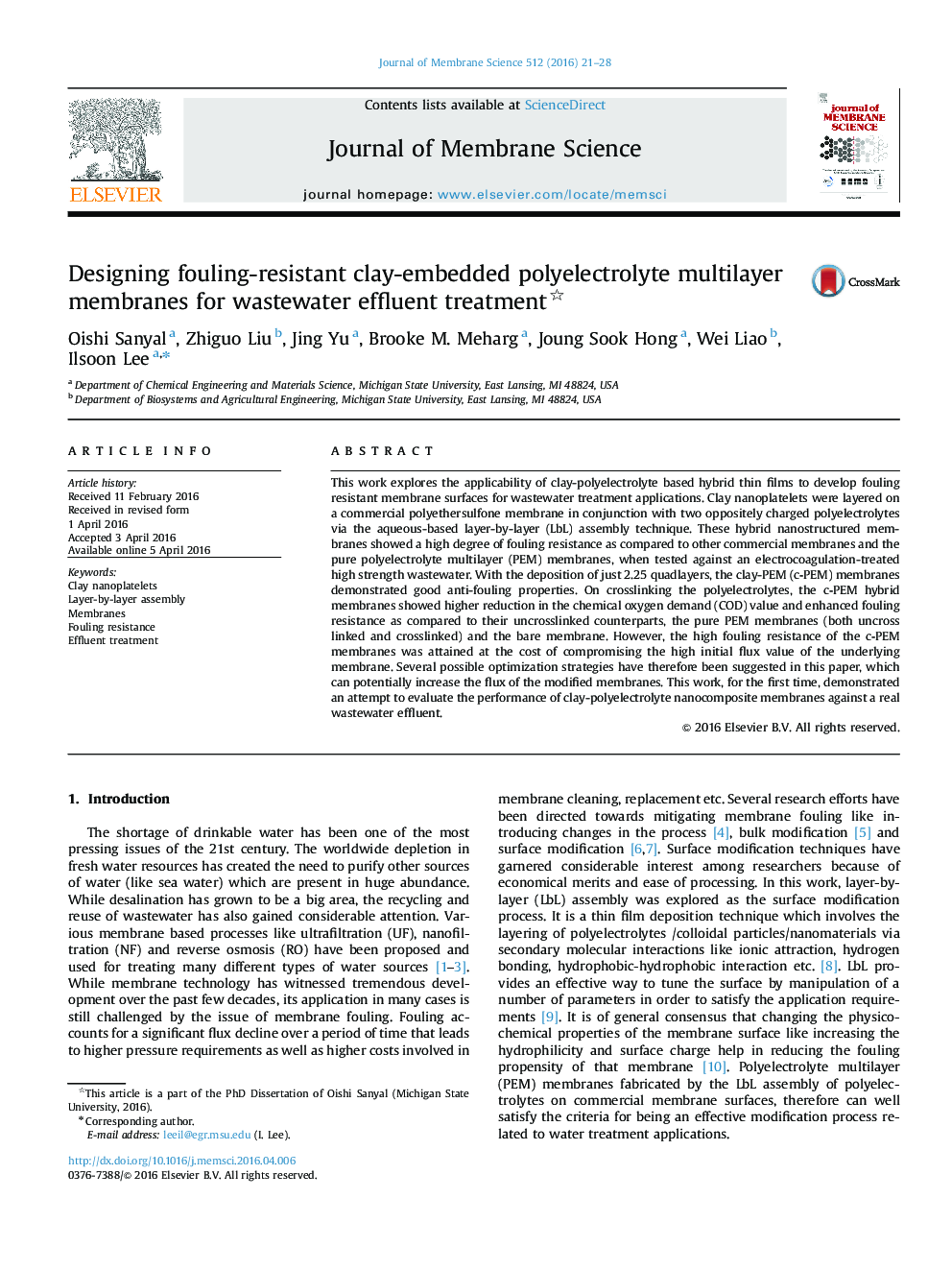| کد مقاله | کد نشریه | سال انتشار | مقاله انگلیسی | نسخه تمام متن |
|---|---|---|---|---|
| 632357 | 1455987 | 2016 | 8 صفحه PDF | دانلود رایگان |
• PES membrane surface modified by clay-polyelectrolyte based films.
• Modified membranes tested against real effluent under cross flow conditions.
• Modified membrane showed low fouling propensity.
• Crosslinking led to improved COD removal.
• Thickness values of the films determined.
This work explores the applicability of clay-polyelectrolyte based hybrid thin films to develop fouling resistant membrane surfaces for wastewater treatment applications. Clay nanoplatelets were layered on a commercial polyethersulfone membrane in conjunction with two oppositely charged polyelectrolytes via the aqueous-based layer-by-layer (LbL) assembly technique. These hybrid nanostructured membranes showed a high degree of fouling resistance as compared to other commercial membranes and the pure polyelectrolyte multilayer (PEM) membranes, when tested against an electrocoagulation-treated high strength wastewater. With the deposition of just 2.25 quadlayers, the clay-PEM (c‐PEM) membranes demonstrated good anti-fouling properties. On crosslinking the polyelectrolytes, the c‐PEM hybrid membranes showed higher reduction in the chemical oxygen demand (COD) value and enhanced fouling resistance as compared to their uncrosslinked counterparts, the pure PEM membranes (both uncross linked and crosslinked) and the bare membrane. However, the high fouling resistance of the c‐PEM membranes was attained at the cost of compromising the high initial flux value of the underlying membrane. Several possible optimization strategies have therefore been suggested in this paper, which can potentially increase the flux of the modified membranes. This work, for the first time, demonstrated an attempt to evaluate the performance of clay-polyelectrolyte nanocomposite membranes against a real wastewater effluent.
Journal: Journal of Membrane Science - Volume 512, 15 August 2016, Pages 21–28
